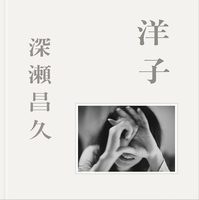$60.41
- Hardcover
- 230 pages
- 275 x 217 mm
- ISBN 9784865411812
- Oct 2024
It was March 2011. The Fukushima Daiichi Nuclear Power Station dispersed radioactive material. In Tokyo, I felt a sense of fear watching footage of reactor buildings exploding that brought home to me the reality of my own and my family's lives being in danger and the demise of Japan. It was the moment when I realized my mistake up to that point in taking things for granted without even a second thought.
This was an accident involving radioactivity that was unforeseen. I felt compelled to begin visiting Fukushima even though I had no prior knowledge of the area and no idea what I could accomplish with photographs. But what I found there were ordinary rural landscapes of forests, fields, hills, and mountains. Radioactive material and radi ation as well as their effects are not visible to the eye. It is only the high numbers shown on a dosimeter that prove the factual existence of radioactive material. This undeni able reality in my mind merged with the peaceful and pic turesque landscapes that were there evoked in me an even more indescribable sense of dread. I became aware that we are unable to see what is truly terrifying. I won dered if it would be possible to make visible the loss of homeland and the invisible damage, and so I continued to photograph in Fukushima.
I moved to Fukushima three years after the accident and it was then that I faced my first inner conflict as a resident. Enough time had already gone by since the accident so that many people had resumed their normal lives. But I couldn't help noticing the abnormal state of constant anxiety and inner turmoil that burdened people as they were going about what appeared to be life as usual.[...]
It became quite clear to me here that what is closer to the truth is often less visible. Just as radiation cannot be perceived with the five senses, the resulting damage and what is essential moving forward also cannot be felt as tangible reality. Perhaps the difficulty in perceiving what is true is not unique to Fukushima but is shared worldwide.[...]
More than ten years after the accident, opposing views and ways of being intermingle. All can be considered the truth. Some people, feeling helpless to do anything, silently observe and suppress their feelings. Others are firmly resolved to act based on their convictions. No one can really say what is right in the past, at present, or in the future. Nevertheless, in Fukushima the land is still there and people continue to live there. This fact alone may be the most significant truth of all.
I've continued to question the meaning of photographing in Fukushima but have yet to find an answer. For me, living and taking photographs are interchangeable, so I guess just continuing to photograph is the same as just continuing to live. The people in Fukushima, as long as they are alive, are just continuing to live their lives. To live life is to continue to move forward, even if you don't know where you are heading or what it all means. This time and space cannot be avoided. All we can do is accept the conditions we find ourselves in.
Yuki Iwanami
Born in 1977, Nagano, Japan, started his career as a photojournalist in 2001. He covered stories in Cambodia, the Balkans, Afghanistan, and Pakistan. In 2003, he joined the staff photographer team of a major Japanese newspaper based in Tokyo, Sendai, Osaka, and Fukushima.
In 2015, he became a freelance photographer and relocated his base to Fukushima Prefecture. He has since covered stories around the world, with a particular focus on the nuclear power plant disaster in Japan.
Recipient of awards, including the KONICA MINOLTA PHOTOPRIMIO(2003), Critical Mass Top 50 (2013), NPPA Best of Photojournalism (3rd place of Best Published Picture Story, 2018) , and Irie Taikichi Memorial Photography Award (2020).
Notable exhibitions include Blue Persimmons (Nikon Salon, Tokyo and Osaka, 2019; Singapore International Photography Festival, 2020; Daegu Photo Biennale, Korea, 2021; KG+SELECT, Kyoto, 2022), Threads in the Dark (Irie Taikichi Memorial Museum of Photography Nara City, 2021), Fukushima, Tohoku: The Climate/Disaster as Captured by Photographers (Fukushima Museum, 2023), Focus Photography Festival (Mumbai, 2017) and HOKKAIDO PHOTO FESTA (Sapporo, 2022).
Published works include One Last Hug (Seigensha) and Threads in the Dark (Irie Taikichi Award Executive Committee).
Blue Persimmons was completed with support from the W. Eugene Smith Memorial Fund in 2020.










































